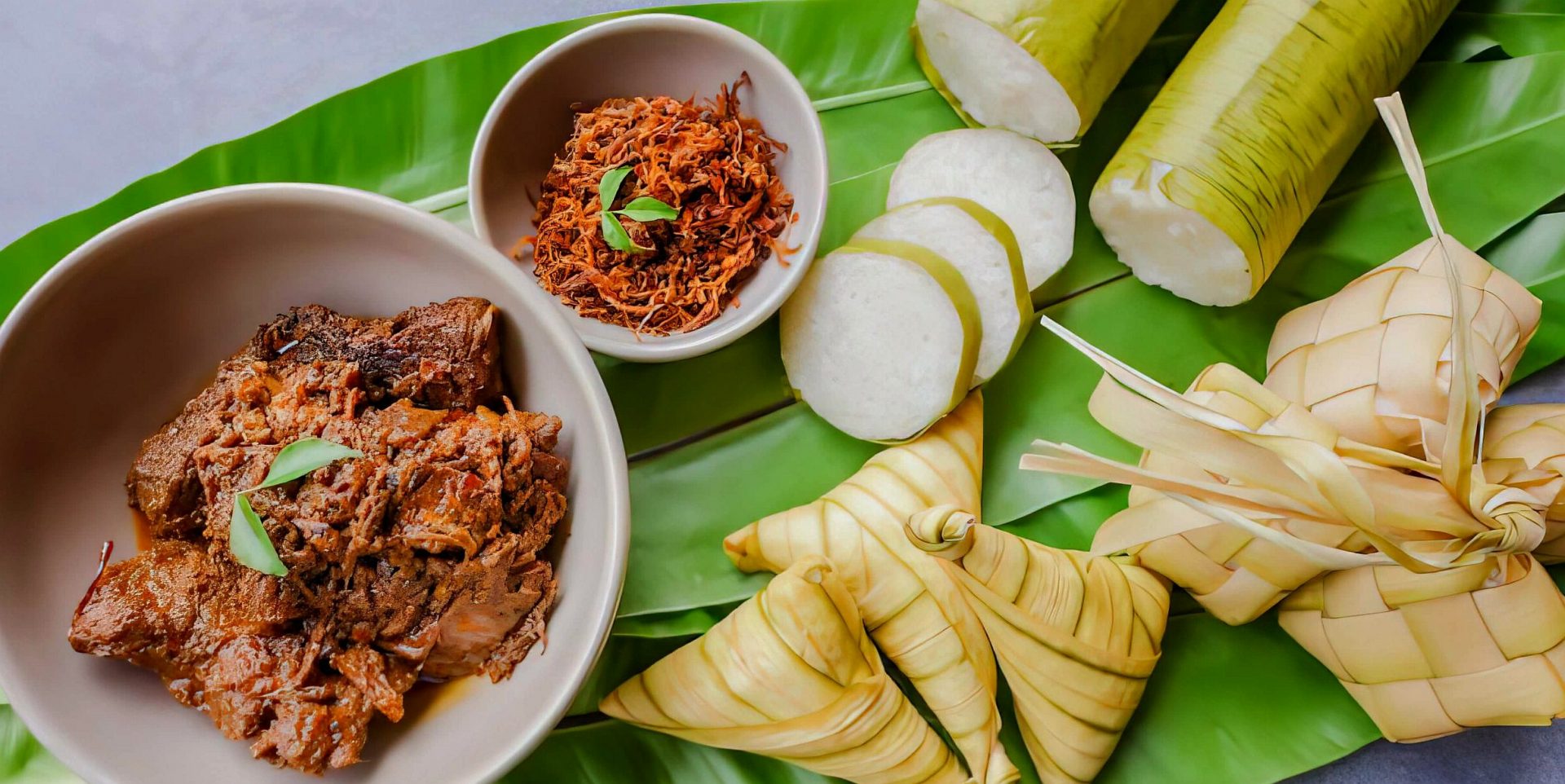Ramadan and Hari Raya feature a number of culinary treats often only available during that time, and many of these favourites have a history dating back longer than you may think.
We look forward to every festive season for delicious food, and Hari Raya, observed this year on April 10 and 11, is a perennial favourite. This annual celebration marks the end of Ramadan, or the fasting month, for Muslims globally. In Malaysia, numerous Malay delicacies create a nostalgic appeal for this significant celebration.
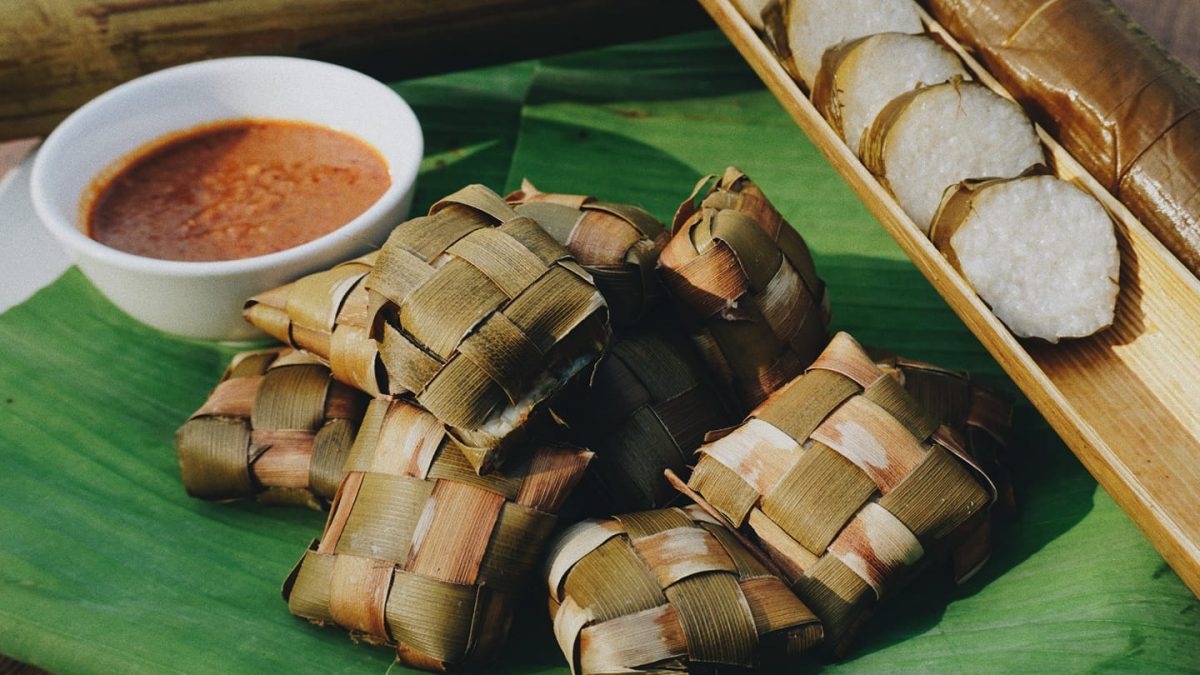
These dishes may be in the simplest form but have the ability to tell the story of people, history and culture. On special occasions, it is about connecting with each other, strengthening relationships and understanding how food nourishes our bodies, hearts, and souls. Most food preparations take place two or three days before the celebration, in which usually the elders lead the process due to their vast experience. These are famous Hari Raya foods served throughout the old days and still intertwine with Malay culture today.
RENDANG
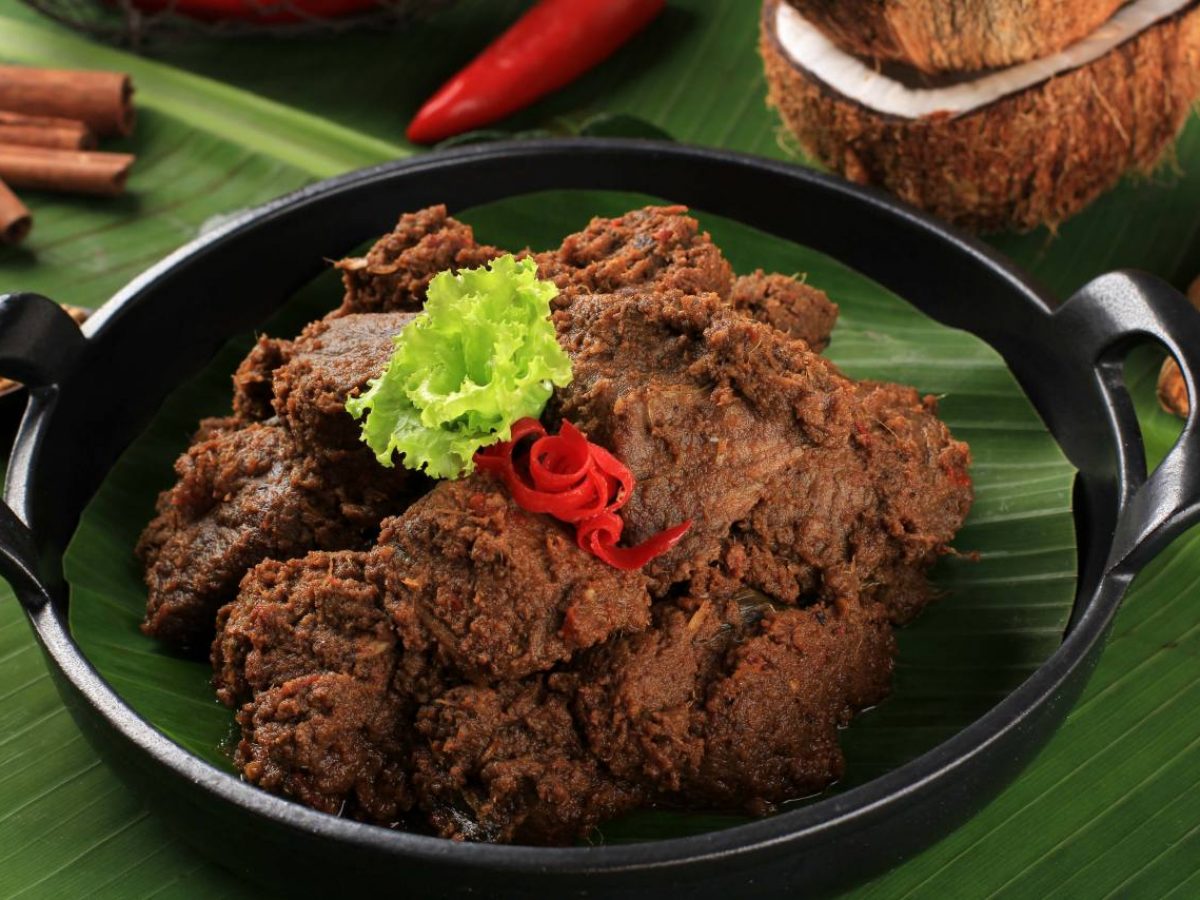
These days, beef and chicken rendang are commonly seen as main dishes for Hari Raya. In the past, these meat dishes were considered hard to prepare and lavish to purchase, which made the Malay community really look forward to Hari Raya. It’s safe to say that no Raya menu is complete without rendang. Contrary to common belief, rendang is not the name of the dish, but rather a special process that turns the beef tender, dry, and flavourful. Initially, it was made from buffalo meat and only served at special ceremonies of the Minangkabau people.
Long ago, West Sumatra and India had regular contact for trading, which also paved the way for spices and herbs. The Minangkabau community cooked the dish longer in low heat until the meat soaked up the sauce and coconut milk. It was prepared in a way that the dish has a long shelf life without using chemicals and could be stored during long journeys. Minangkabau people still accept that cooking rendang teaches three values: patience, discretion, and perseverance. Their migration to places like Riau, Jambi, and Malaysia spread the popularity of rendang.
In most Malay households, families gather to savour their grandparents’ version of rendang as it’s dubbed to be the best. Boasting a punch of spices and aroma, the complex process and long cooking time makes rendang arguably a dish that justifies the phrase ’labour of love.’
LEMANG
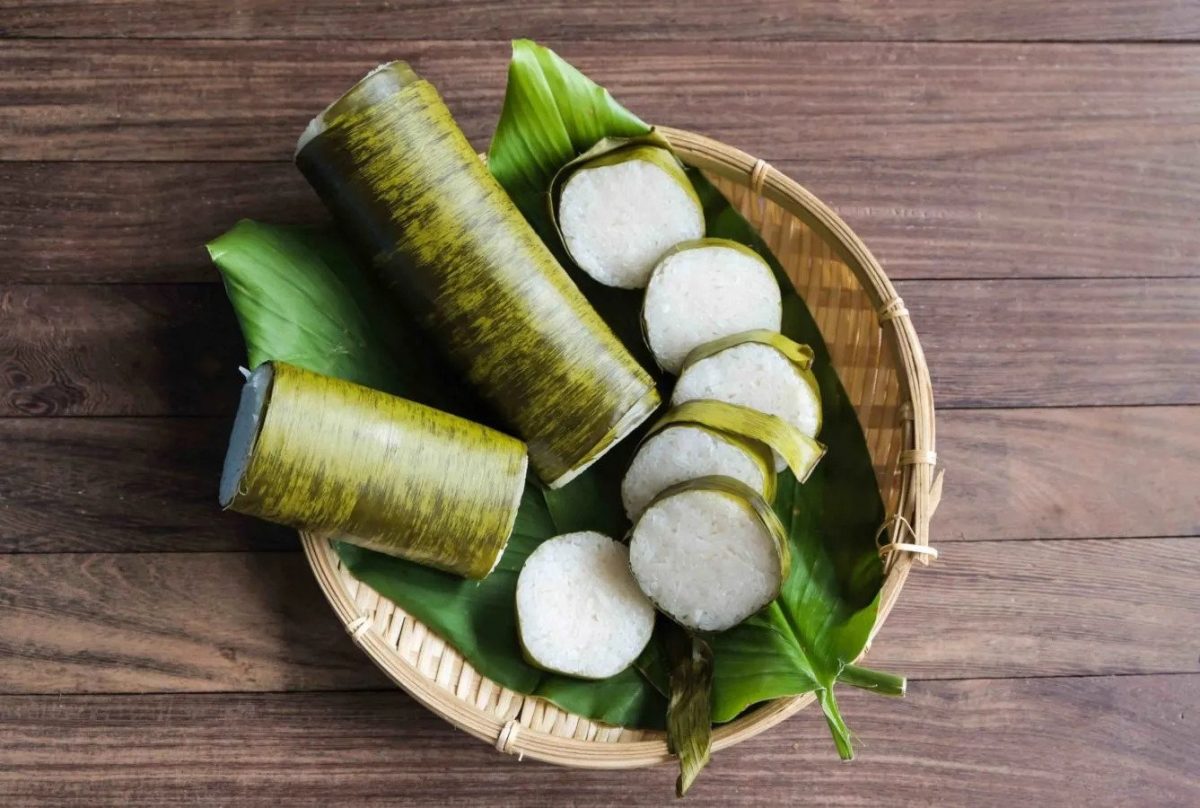
Lemang is a dish that marks the commencement of the Ramadan spirit along streets and villages. This traditional dish is not only a staple for the Malay community, but is also vital for the Dayak people in Sarawak for Hari Gawai. It is believed that lemang originated from the earliest inhabitants of the Malay Archipelago, known as the Negrito natives or Orang Semang, with their archaeological findings in Gua Cha, Kelantan.
The dish is essentially coconut milk, sticky rice, and salt wrapped in banana leaves, then stuffed into hollow bamboo sticks and cooked over a fire. The leaves add a subtle fragrance to the dish and prevent the rice from sticking to the bamboo tubes.
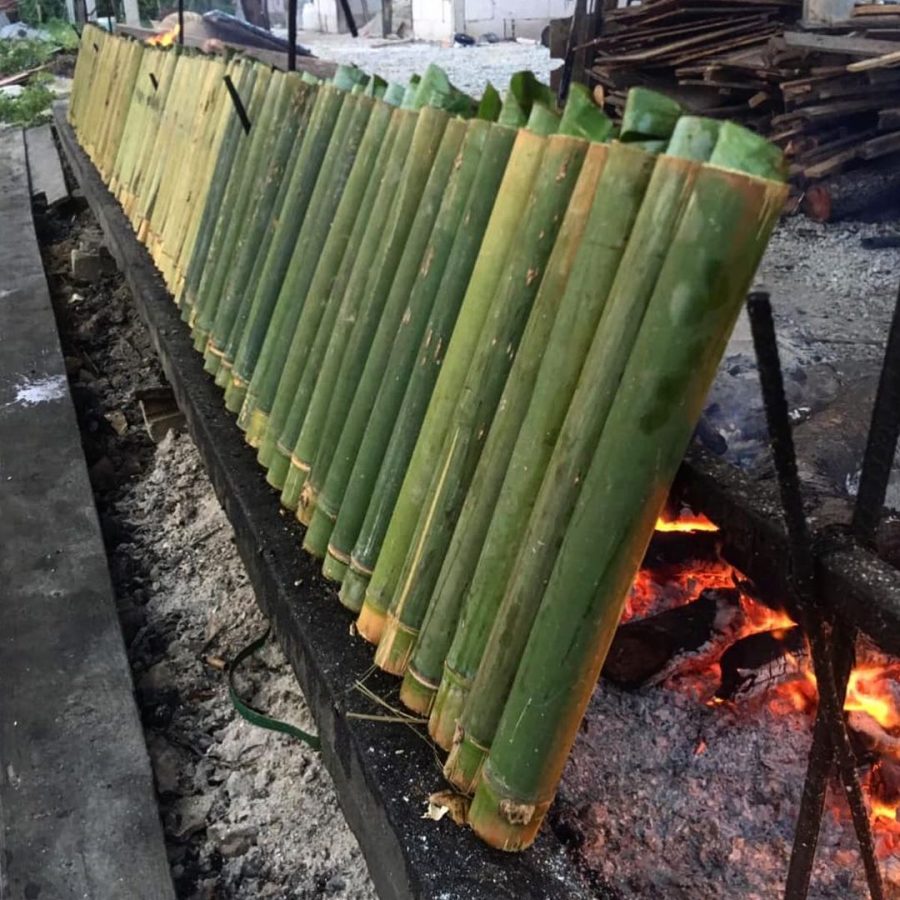
In rural areas, women prepare the ingredients while men source the jungle for suitable bamboo sticks. The cooking process takes four to five hours, and the long sticks are skilfully slanted and turned to ensure an even heat distribution. The familiar smoky flavour comes from the open flame, while the texture is soft on the inside and crispy on the outside. Lemang is usually paired with spiced meats and curries of your liking.
KETUPAT
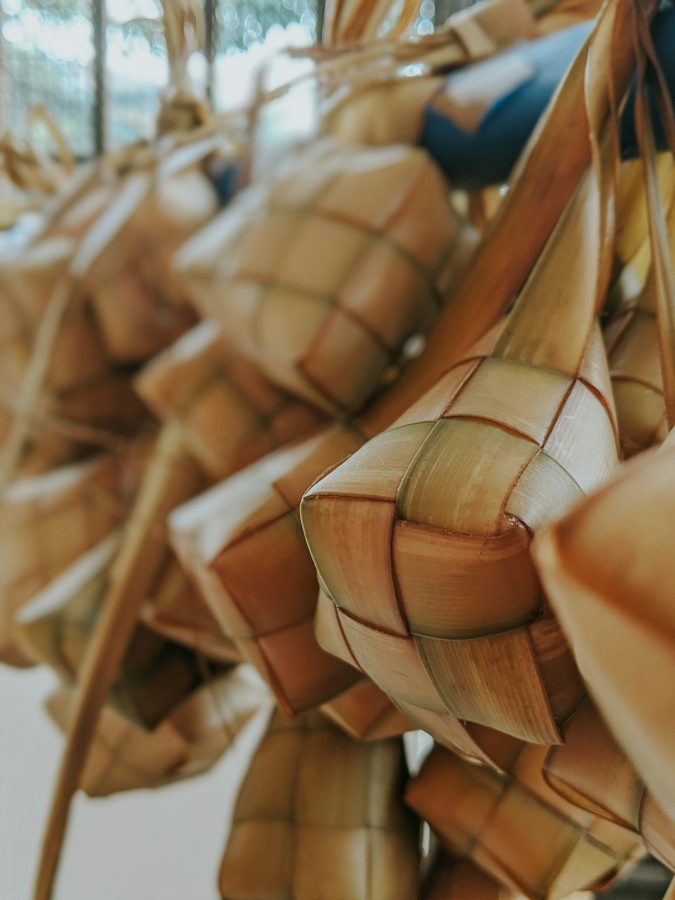
These diamond-shaped dumplings are another way to enjoy rice for Hari Raya. Ketupat was first introduced by Sunan Kalijaga, one of the nine saints of Javanese Islam between the 15th and 16th centuries. Ketupat is also known as ‘kupat’ in Java, shortened for ‘ngaku lepat”. This phrase translates as admitting one’s mistakes and relates to the act of asking for forgiveness. The criss-cross weaving patterns of the palm leaves symbolise the sins and mistakes of human nature. The art behind the weaving of the leaves is passed down over the generations. Meanwhile, the white rice cakes inside represent purity that is attained after a month of fasting.
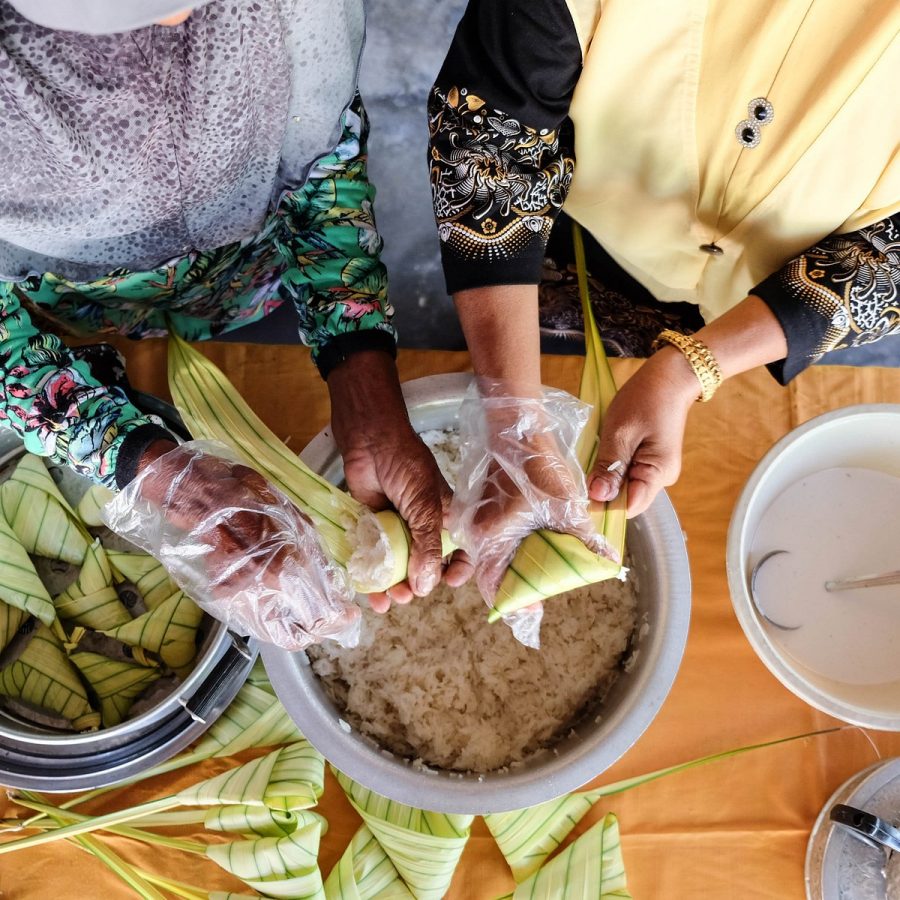
You’ll also find ketupat being hung on the doorsteps of Malay houses. This is a tradition to ward off evil spirits from entering the home. Some historians also believe that ketupat was created by seafarers to prevent cooked rice from going bad on long voyages on the sea. Similar to lemang, these rice pockets are best consumed with savoury sides like chicken curry, rendang, or peanut sauce.
SERUNDING
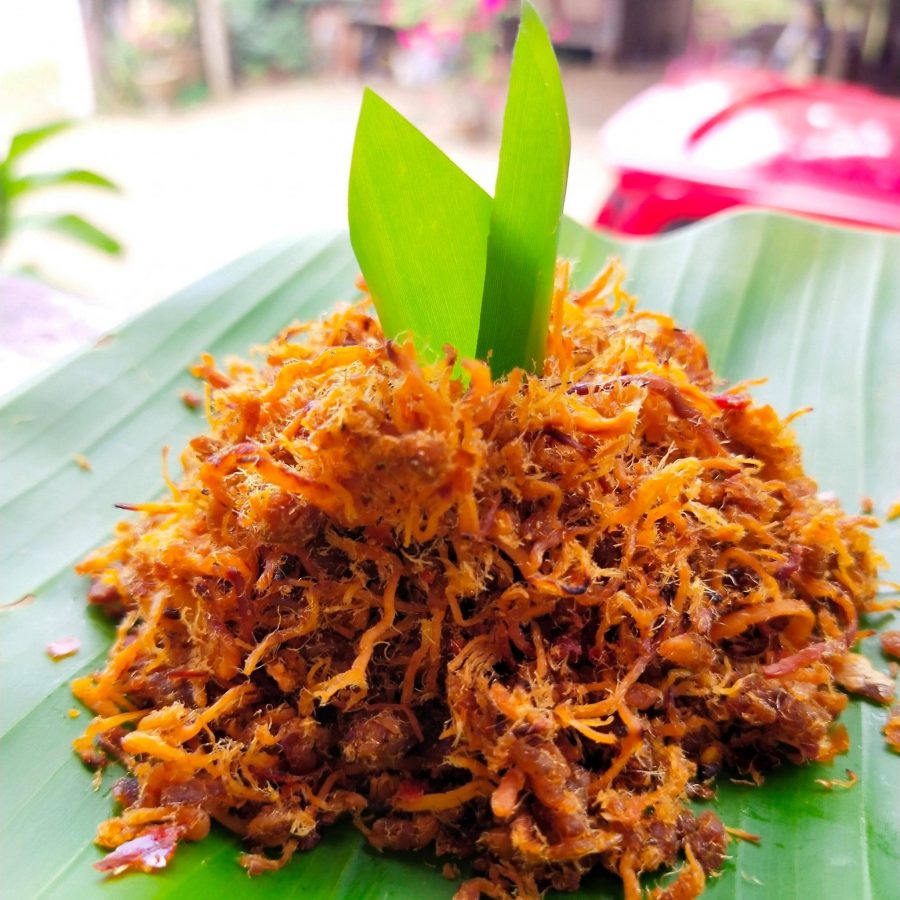
Rightfully designated as Malaysian’s version of meat floss, this is another dish that demands effort and time. Serunding originates from Kelantan and is a common dish during Hari Raya. The community usually makes it when there is an excess of meat for the festival. The dish is generously infused with spices and cooked until flaky and dry, which gives it the durability to remain unspoilt. The choice of meats is usually chicken or beef and sometimes sees the addition of grated coconut. Toss it over lemang or ketupat and embrace the savoury notes on your palate.
BUBUR LAMBUK
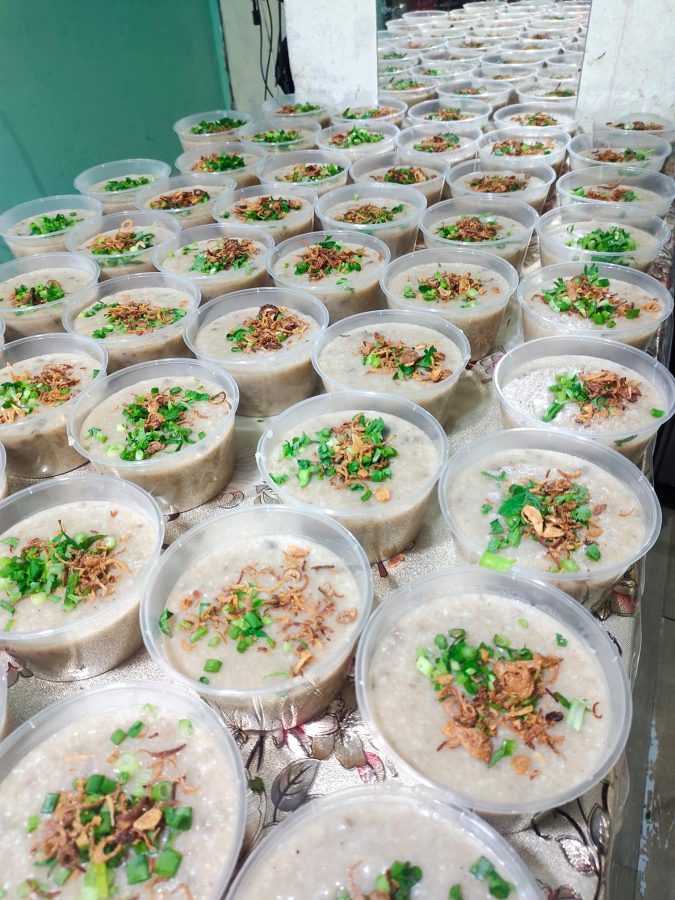
Some of us may be sold on the idea that this porridge dish is only served in mosques – but it is actually a staple for Hari Raya. It is said that even when Islam came to Tanah Melayu through the Terengganu Batu Bersurat (Inscription Stone), the culture of making porridge for special occasions already existed. However, the dish became well-known in the 15th century in the Malacca Malay Sultanate, when Parameswara received a visit from Emperor Hun Jen from Cambodia. Back then, Terengganu was under Malacca’s rule, and the emperor requested to prepare a meal that was easy to swallow, delicious and nutritious. From then, bubur lambuk’s fame grew, especially during the opening of new mosques.
Rice porridge is generally a versatile dish and in Malaysia, the ingredients differ across the states. Typically, the porridge is made from rice, meat and vegetables, with a medley of spices. Terengganu’s version sees the addition of raw chips and budu (anchovy sauce). In the northern regions, the underlying sweet taste of the porridge comes from coconut milk and cinnamon bark. Johor’s variation has an extra savoury kick to it thanks to the addition of biryani paste and kurma paste. If you have numerous Hari Raya open house invitations across the states, put your taste buds to the test.
DODOL
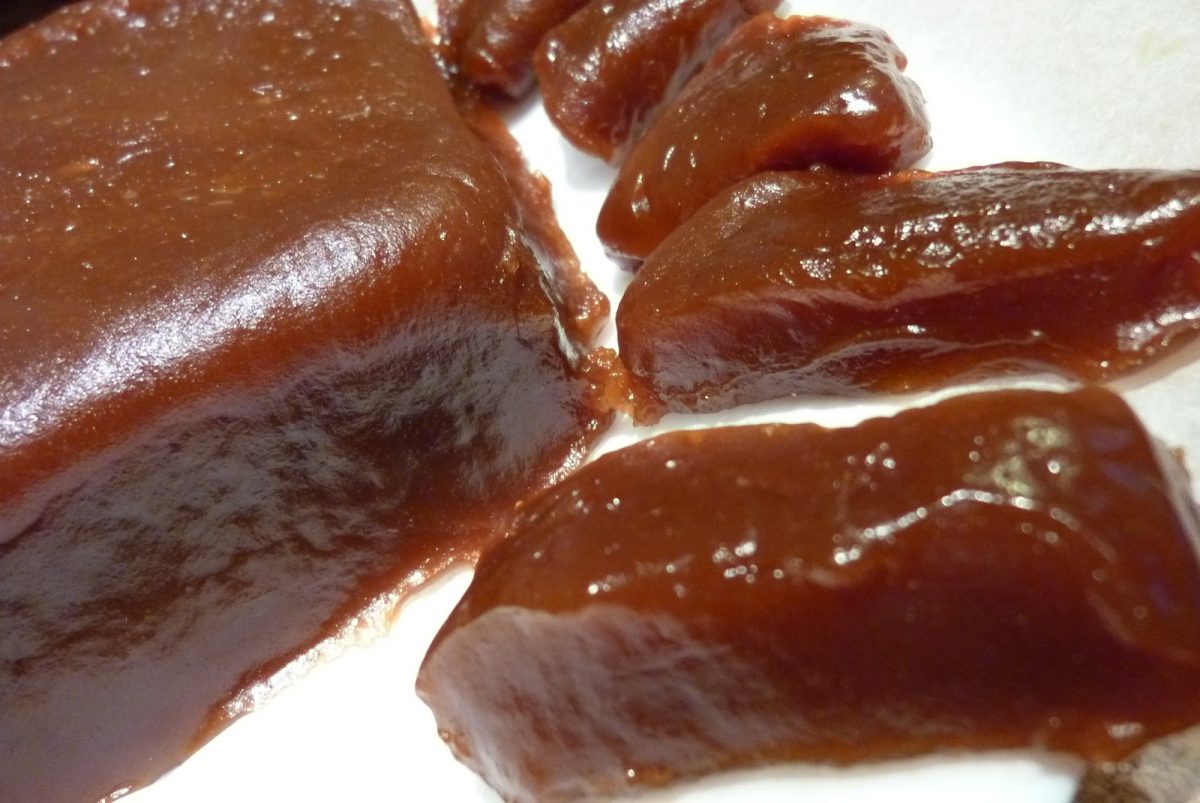
These dainty bites may have originated from the culinary traditions of West Java, yet it is popular across Southeast Asia. The oldest written record about dodol in the 20th century is linked with the Malay community in Batavia, Indonesia under the Dutch colonial era. The bite-sized desserts were used as gifts to promote unity and strengthen bonds.
Dodol is made from coconut milk, cane sugar, and rice flour. What makes it addictive is its toffee-like texture, resulting from continuously stirring in a hot wok for nine hours. If overlooked, the sugar content of the dessert will result in a burned coarseness. It is considered fully cooked when it turns firm and does not stick to one’s fingers when touching it. It is then rolled, portioned, and wrapped into various sizes and shapes.
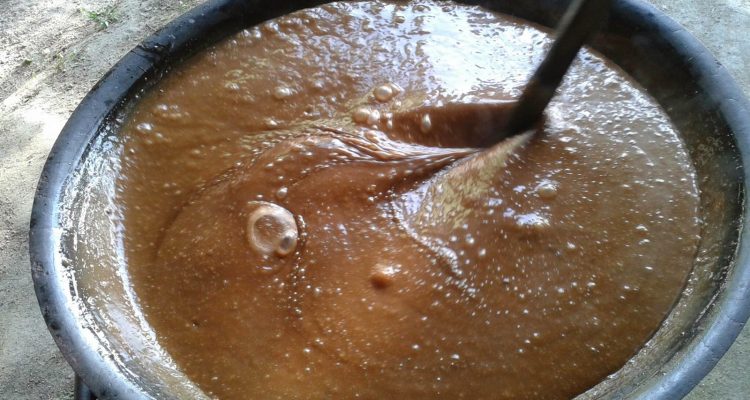
Dodol preparation in Malay villages embodies what a festive mood should be – taking turns to stir the dish, accompanied by warm conversations and a never-ending flow of snacks. A nod to creativity and the dish’s outreach to many regions are flavours like durian, soursop, jackfruit, and apple.
SAYUR LODEH
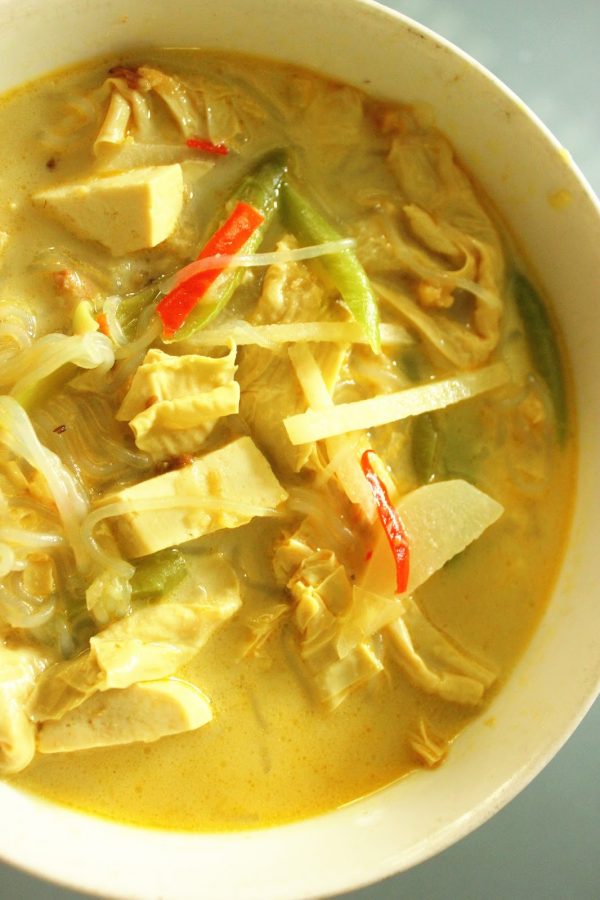
A beloved Hari Raya dish that has a history of curing plague in Malaysia’s neighbouring country of Indonesia. Sayur lodeh is a warm, comforting coconut stew made from vegetables like eggplant, green beans, long beans, tempeh, and turmeric, which gives it a yellow tint. This dish is light and mild; therefore, it is often paired with serunding, rendang, and lemang.
The origin of the vegetable stew stretches back to the 10th and 16th centuries when the Spanish and Portuguese introduced long beans to Java. Legend also has it that this dish only turned into a tradition during a plague in the city of Yogyakarta, Indonesia. The sultan ordered for his people to cook sayur lodeh throughout quarantine, and after 49 days, the plague ended. Modern nutritionists have highlighted the anti-inflammatory qualities of the dish. Beyond a healthy approach, this brought the importance of social solidarity and togetherness among the people as everyone cooked the same dish. You’ll also find sayur lodeh is also served during the Lunar New Year celebration by the Peranakan community.
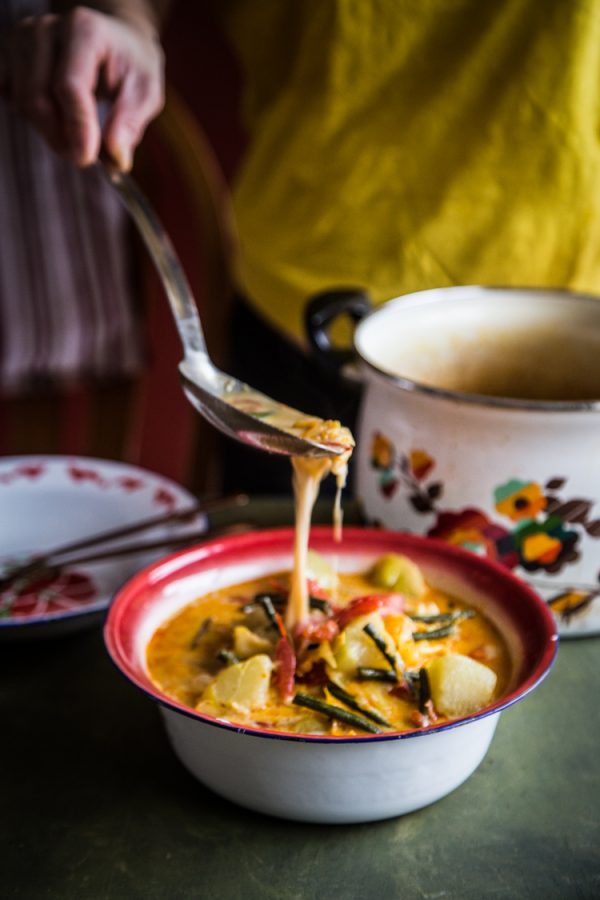
Be sure to sample some of these Ramadan favourites this year during the upcoming Hari Raya celebrations next week!
"ExpatGo welcomes and encourages comments, input, and divergent opinions. However, we kindly request that you use suitable language in your comments, and refrain from any sort of personal attack, hate speech, or disparaging rhetoric. Comments not in line with this are subject to removal from the site. "


